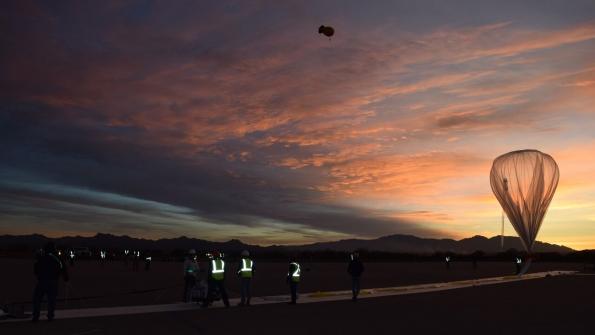
U.S. Southern Command is looking for new technologies that can provide long-endurance, wide-area surveillance over maritime and littoral areas and that can transition into a program of record, Adm. Craig Faller said Dec. 2.
High-altitude balloons, also known as stratollites, and unattended ocean sensors are among the candidates to augment the handful of intelligence-gathering aircraft operated by the command in Latin America, Faller said during a virtual meeting of the Defense Writers Group.
“That’s very expensive flight hours on some of the high-end aircraft,” Faller said. “What we need, I think, is longer-dwell, innovative-type of technologies with unmanned platforms on the sea or above the sea.”
In 2017, Adm. Kurt Tidd, who was Faller’s predecessor, introduced the possibility of operating stratollites over maritime areas in the command’s area of responsibility, which includes the Eastern Pacific, Caribbean Sea and South Atlantic.
“We’ll soon launch the first test flight of a ‘stratollite’—a balloon operating in the stratosphere,” Tidd said during a keynote address of the GEOINT Symposium in June 2017.
Two years later, Southern Command may have followed up on those tests. A license application filed by Sierra Nevada in 2019 with the Federal Communications Commission sought permission to perform a series of stratollite flight tests with a synthetic aperture radar and a mesh networking radio.
The capabilities shown by stratollites in such Applied Concept Technology Demonstrations funded by Southern Command have impressed so far, Faller said.
“I think there’s a real future in that,” he said.
Southern Command is among several military organizations that may seek to leverage the high-altitude balloon technology demonstrated by Google’s Project Loon and Arizona-based start-up World View.
In early November, the U.S. Army’s Intelligence, Electronic Warfare and Sensors office published a graphic during an Industry Day that showed a concept for using high-altitude balloons to peer deep behind enemy lines and release swarms of small unmanned aircraft systems and unattended ground sensors. The same high-altitude balloons would then relay sensor data collected by those systems back to friendly forces with long-range artillery.
NATO’s high-altitude, balloon-borne synthetic aperture radar program is also experimenting with the stratollite concept, with assistance from the University of New South Wales in Australia.





